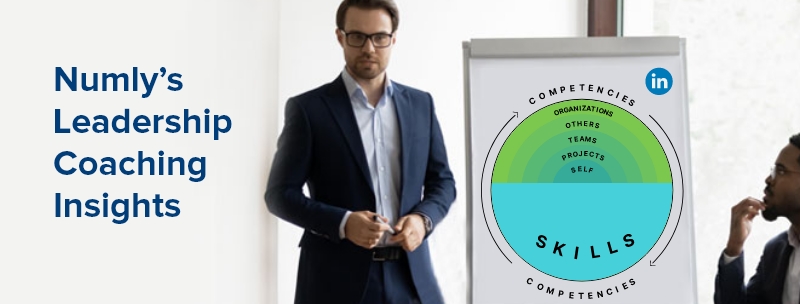Organizations across the world believe that the best talent does the best work. Most organizations, however, struggle to find and retain top talent. One of the most pressing issues is to attract and retain talent and develop and manage that talent so that it contributes to the organizational growth story.
Trends such as the Great Resignation have also put employee retention on top of everyone’s to-do list. Organizations have realized that they are no longer bringing in people on a ‘hire-till-retire’ basis. The days of a ‘job for life’ are well behind us – data shows that the average American will have a minimum of 12 jobs in a lifetime.
With new employee hiring and onboarding being time-consuming, effort-intensive, and expensive, the easiest way to build high-performing teams is to devise strategies to retain top talent. The best way to do that is by offering employees clear career pathing frameworks that show that they are moving ahead in their life and professional trajectory while under the organization’s roof.
The purpose of career pathing
Employees want clear direction and organizational investment into their professional development for them to have a promising future. Unfortunately, organizations assume that having a conversation during a yearly review on where the employee aspires to be and how they want their careers to grow as career pathing conversations.
However, career pathing is not just the sequence of jobs that an employee holds. It is about creating a future for the employee to focus on and providing the right set of tools, resources, and skills along with clearly defined action items to ensure that these goals are met.
Career paths are highly personal. One employee, for example, might be looking at greater work-life balance and workplace flexibility while another might be looking for overseas opportunities. One member might want to become technically proficient and move to a people manager role while another might want to only increase technical dexterity.
Good career pathing initiatives simplify career conversations between managers and their team members and give employees a clear structure that helps people become more successful in their jobs.
Creating career paths is of strategic priority
Developing career pathing initiatives that work is becoming increasingly important as the war for talent intensifies.
As trends like the Great Resignation occupy mind space and the skills gap increases, organizations have to come up with clear strategies to retain top talent. If they don’t, they will find their high-performing employees cherry-picked by other organizations that meet their needs.
Organizations also need to consider the cost of employee turnover. The more information- and interaction-intensive the job, the higher the threat to productivity and the more time and money must be invested to train and onboard for these roles.
Along with that, if competitors successfully poach talent, they get an insider’s view into the organizational operations, strategies, and culture.
Talent matters now more than ever because of its extremely high value and scarcity. Creating the right opportunities within the organization is a great strategy to retain them.
The road to career pathing
Some of the key reasons that people leave are poor leaders and inadequate career development and learning initiatives that lead to low engagement. Employees also leave for financial gain; however, the Great Resignation has shown us that money is no longer the only driving factor driving retention.
While most organizational leaders understand the importance of employee development, most admit that they do not devote the necessary time and resources to this activity. The first thing that needs to change in this mix is the way we approach career pathing.
Firstly, career pathing is not a one-time exercise. It is not a singular conversation that expresses a wish. It is a conversation to set the career goals, identify the actions that will bring the employee to the goal, evaluate the desired skills for the goals, and assess the gaps.
Career pathing initiatives need the complete involvement of the manager, throughout the entire journey, till the goal is reached. The manager has to help the team members identify the career paths they want to build and help them take the right actions by building accountability, removing obstacles, and facilitating forward movement. As such, career pathing initiatives need coaching.
Coaching – a crucial tool in the career pathing toolkit
Career pathing aligns the individual’s goals with the strategic goals of the organization. It helps in managing employee perceptions of career development opportunities which enhances engagement and loyalty.
Detecting high-performing employees and developing the right growth plan for them keeps them invested. Similarly, helping employees proactively develop their skills to meet their goals ensures that every member of the team is performing optimally and that all performance and skills gaps are addressed appropriately.
Managers need to become coaching managers to
- Drive career pathing initiatives as it drives engagement, demonstrates genuine intent, and elevates accountability toward personal development.
- Guide employees to navigate performance challenges and identify limiting beliefs and skill gaps that prevent goal attainment.
- Offer their team members a non-judgmental space to be their authentic selves without any worries or concerns of perception.
- Build healthy team relationships where actions are in alignment with goals in a contextual, measurable, and data-backed manner.
Coaching managers need to have highly developed skills of empathy, active and deep listening, and intelligent questioning. Managers can help their team members identify perfect answers and solutions to their problems and deliver enablement through knowledge resources or skill development activities.
Through deep questioning they enable individuals to identify the actions that will bring them close to their goals, keep the goals under review, and ensure that there is week-on-week forward movement.
Employees also become more invested and engaged in their work when managers use this methodology to drive career pathing initiatives. Since the manager coaches them to navigate challenges and hurdles, the employees become more enthused to implement their action items and eager to move ahead. Proactive change in actions and behaviors also becomes possible since these are contextual to the individual and hold relevance in their career narrative.
Research shows that employees’ views of work and growth opportunities vary by generation. Generation Y workers, for example, look for learning new skills and are also more likely to value a career path than any other generation. Gen Z, for example, seeks greater guidance in the workplace and wants to work with people who take an active, invested interest in them.
A recent report discovered that
- 80% of workers do not think their current employer offers growth opportunities.
- 49% of workers expect their employer to play a part in career development.
- 79% feel pressure to push their careers further as the pandemic ends.
- 86% of workers feel that their career has stalled during the pandemic.
Organizations today have to not only provide career opportunities but ensure that they also provide job enhancement and job enlargement prospects. They have to now position their career pathing initiatives in a way that employees feel that they are being prepared for a lifetime of employability versus a lifetime of company employment.
Using coaching as a tool, organizations can uplevel career pathing initiatives, create individualized career maps, align these with the right learning and development opportunities, and provide continuous support to reach goals.
Organizations today must look at career pathing initiatives as opportunities to create immense value and demonstrate authentic investment into their futures. It goes beyond showing how internal movements take place through vertical and lateral promotions.
Connect with us to see how our AI-driven coaching platform can give your career pathing initiatives the facelift it needs and convert it into a powerful employee retention tool.

